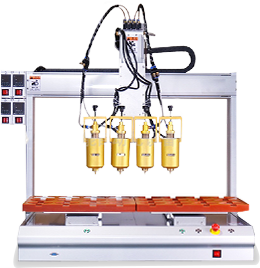

Aluminum alloy or stainless steel structural parts are the core basic components of automation equipment. They are made of 6061/7075 aluminum alloy and 304/316L stainless steel, and are made through CNC milling, laser cutting, precision casting and other processes. The parts have high strength, light weight and corrosion resistance. They can be used as equipment frames, supports and connectors. With precise size and stable performance, they ensure the efficient operation of automation equipment.
Product Features
1. Combination of high strength and light weight (aluminum alloy)
After T6 heat treatment, the tensile strength of 6061 and 7075 aluminum alloys reaches 310-572MPa, and the density is only 1/3 of that of steel. While ensuring structural strength, the weight is greatly reduced, which is suitable for load-sensitive scenarios such as automated robotic arms and high-speed transmission equipment.
2. Excellent corrosion resistance (stainless steel)
304 stainless steel has good corrosion resistance, and 316L stainless steel has stronger resistance to acid, alkali and seawater corrosion due to the addition of molybdenum. It can work stably in humid and corrosive environments and meet the stringent requirements of industries such as food, medicine, and marine engineering.
3. High precision and high stability
Using five-axis linkage CNC machining, the dimensional accuracy is controlled within ±0.01mm, and the surface roughness Ra≤0.8μm, ensuring that the parts fit tightly. After aging treatment, the internal stress is eliminated, and the performance remains stable under complex working conditions such as high temperature and vibration.
4. Flexible customization and high adaptability
Supports customized part shape, size and surface treatment process on demand, and adapts to different brands of automation equipment. Some common specifications are as follows:
Type | Material | Common thickness (mm) | Typical application scenarios |
Aluminum alloy plate | 6061 aluminum alloy | 1 - 10 | Equipment protection cover, frame structure |
Stainless steel bracket | 316L stainless steel | 2 - 15 | Food production line support parts |
Special-shaped connector | 7075 aluminum alloy | 3 - 8 | Industrial robot joint connection |
Product Details
1. Material Type
Aluminum Alloy:
6061 Aluminum Alloy: Good overall performance, medium strength, good weldability and corrosion resistance, commonly used in general industrial automation equipment frames and shells.
7075 Aluminum Alloy: High strength and good toughness, suitable for key structural parts that bear high loads, such as transmission brackets and heavy-duty robotic arm joints.
Stainless Steel:
304 Stainless Steel: Good corrosion resistance and mechanical properties, high cost performance, suitable for general industrial environment equipment parts.
316L Stainless Steel: Improves corrosion resistance on the basis of 304, suitable for chemical and medical equipment in contact with corrosive media.
2. Processing Technology
CNC Machining: Through turning, milling, drilling and other processes, high-precision machining of complex-shaped parts is achieved to meet the strict requirements of automation equipment for size and surface quality.
Laser Cutting: Using high-energy laser beams to cut plates, with narrow incisions and high precision, it is suitable for stainless steel and aluminum alloy thin plate parts, and can quickly complete complex graphic cutting.
Precision casting: For complex structural parts, investment casting, sand casting and other processes are used for one-time molding to reduce processing allowance and improve production efficiency.
Surface treatment: Aluminum alloys provide anodizing and hard oxidation treatment to enhance wear resistance and aesthetics; stainless steel can be polished and passivated to improve corrosion resistance.
 Headquarters tel.
Headquarters tel. E-mail.
E-mail.